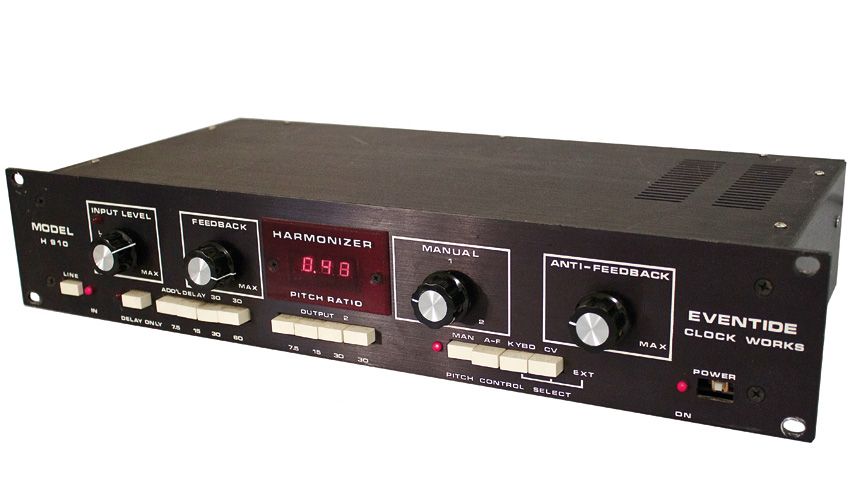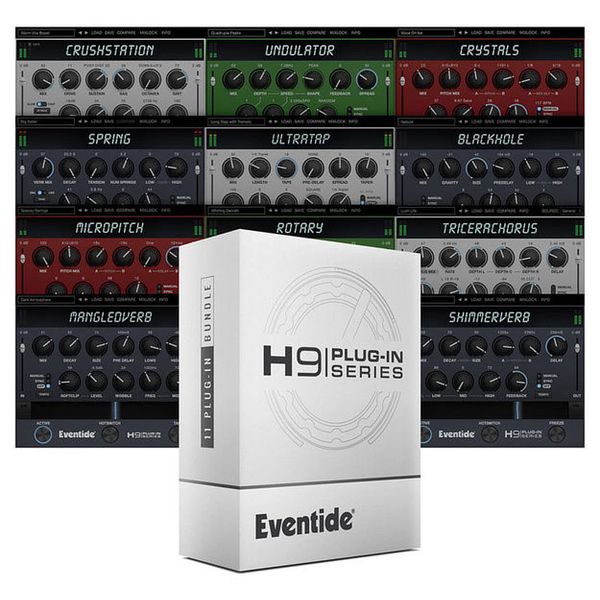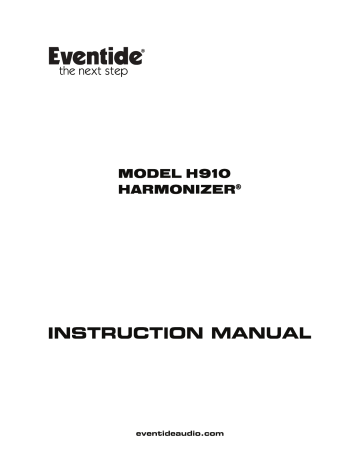
- #Eventide h910 wiring serial numbers#
- #Eventide h910 wiring manuals#
- #Eventide h910 wiring serial number#
- #Eventide h910 wiring series#
These are true industry standards, seen in all world class studios. This brings us to the famous Eventide H3000 and H3500. Like the H910, we no longer service H949’s, but stock many hard to find parts. We no longer service H949’s, but stock many hard to find parts.Īs with the H910, dbx type II cards were used to increase dynamic range. As with the H910, dbx type II cards were used to increase dynamic range. Few of these units survive - if you own one, you’re quite fortunate! For a cool trip down memory lane, check out this original H949 sales brochure.
#Eventide h910 wiring serial number#
The algorithm on the Lupine card (whose name came from a Monty Python sketch) selected splice points at equal voltage levels, greatly reducing pitch change artifacts.) An H949 with a deglitch card will be marked “option: ALG-3” on its serial number badge.Īnother interesting Harmonizer option was the HK940, a two octave keyboard for external control of the H910 and H949. This electronic splicing produced periodic clicks. (Early pitch change circuits “spliced” the waveform, with additional splices at extended pitch change settings.
#Eventide h910 wiring serial numbers#
Units with serial numbers above 1606 could be fitted with the optional “Lupine” LU618, the world’s first degitch circuit for pitch change. 393 seconds of delay, and “Reverse” mode, which played a stored sample backwards. Its many improvements over the H910 included “micro” pitch change mode, two pitch change algorithms (neither sounded perfect, but at least the user had a choice), a basic flange function, up to. I believe that the Eventide H949 Harmonizer hit the market in 1980. Many contain interesting and humorous passages.)
#Eventide h910 wiring manuals#
(All the Eventide manuals are excellent, with detailed operation and theory sections, and complete schematics.
#Eventide h910 wiring series#
Period sales brochures and ads included a series of funny, clever cartoons that helped explain the unusual capabilities of the Omnipressor. They listed for about $600 in the 70’s and are worth many times that now. The more common later version (with banks of white push buttons) retained the dbx VCA but used a home grown detector circuit. Early units, identified by their 3 lamps above a white meter, utilized peak detectors and VCA modules that were made by dbx. Of course, they could also be used for conventional compressing, limiting, and gating tasks. Dynamic reversal flipped the relatively low level attack and decay with higher level program material, and could be used to make a voice track sound “backwards”. Infinite compression yielded constant output level regardless of input level changes. This cool looking piece had unusual capabilities. Described as a “compressor with attitude” by Eventide, the Omnipressor was a compressor, limiter, gate, expander, and more. The 28 Omnipressors, sold in the early and mid 1970’s, are favorites around our shop though they are not widely known or well understood. One of them should be in a museum! Typical refurb cost including recap, lamp replacement, and general servicing and calibration is about $475.00. From somewhere, our shop has two yellowed blueprints of the original the schematic (very informally drafted).

In my opinion this was the first true “effects box”. And the PS-101 was truly “instant” - you simply mounted it in a rack and patched it in.

Still, phasing is effective, and is similar to flanging. Because it is based on phase shift, being capacitor based, the peaks and notches are unrelated harmonically and acoustically, and shallower. Phasing sounds different than flanging - most would say inferior.

The 1745M’s optional pitch change module, though it had no deglitch circuit and thus had obvious artifacts, was an important first - the first Harmonizer was born, though it hadn’t yet been named.) The Instant Phaser was the first outboard device to emulate tape flanging, formerly an awkward process that required two tape machines. (Those early versions used shift registers the later 1745M, which is more often seen, used RAM. In 1971, their first products were released - the Instant Phaser (all analog), and the relatively rare 17A Digital Delays. Eventide began in the basement of a small New York small studio building tape machine locators, first for their own studio, and then for Ampex.


 0 kommentar(er)
0 kommentar(er)
